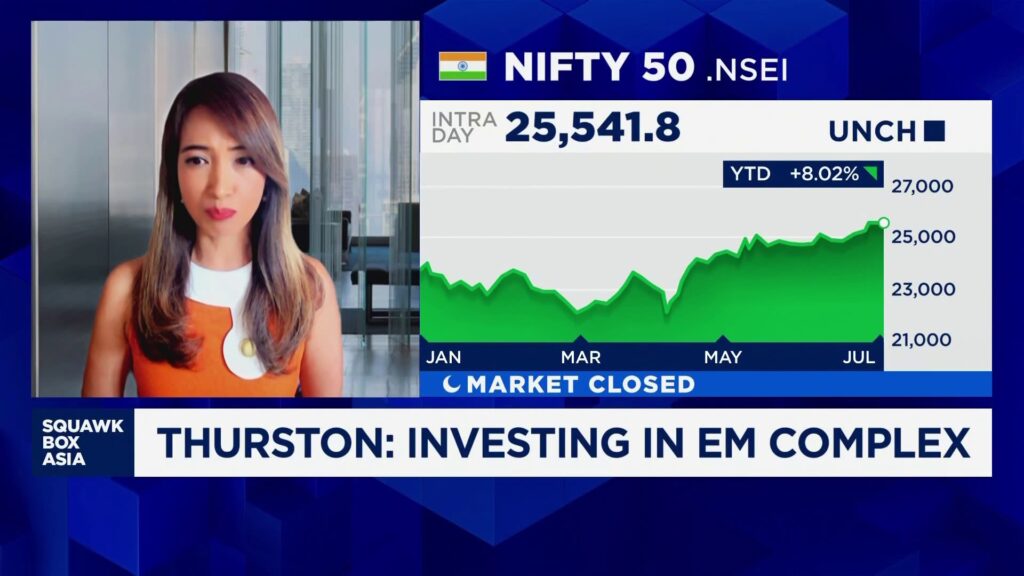The rising middle class in India, Saudi Arabia, and China is reshaping consumption patterns, presenting unique investment opportunities in these rapidly evolving markets. Vivian Lin Thurston, a portfolio manager at William Blair Emerging Markets Growth, highlights the potential for growth in these regions, focusing on the consumption theme that is driving economic transformation.
As these countries experience significant economic growth, the middle class is expanding, leading to increased consumer spending. This shift is not only altering local economies but also attracting global investors looking to capitalize on new market opportunities.
India’s Consumption Surge
India’s burgeoning middle class is a key driver of its economic momentum. The country is witnessing a shift from traditional spending patterns to more diversified consumption, encompassing sectors such as technology, healthcare, and luxury goods. According to Vivian Lin Thurston, the Indian market presents a “compelling opportunity” for investors due to its youthful population and rapid urbanization.
With a population exceeding 1.4 billion, India is poised to become one of the world’s largest consumer markets. The rise in disposable income and a growing appetite for premium products are fueling this consumption boom.
Technology and E-commerce
The digital revolution is at the forefront of India’s consumption trends. The proliferation of smartphones and internet connectivity has led to a surge in e-commerce, with platforms like Flipkart and Amazon India experiencing exponential growth. This trend is expected to continue as more consumers embrace online shopping for convenience and variety.
The Indian e-commerce market is projected to reach $200 billion by 2026, driven by a growing middle class and increased internet penetration.
Saudi Arabia’s Transformative Vision
In Saudi Arabia, the government’s Vision 2030 initiative aims to diversify the economy away from oil dependency, with a strong emphasis on developing the private sector and enhancing consumer markets. This strategic shift is creating new opportunities for investment in retail, entertainment, and tourism.
As part of this vision, the kingdom is investing heavily in infrastructure and urban development, which is expected to spur consumer spending and attract international brands. The rise of shopping malls and entertainment complexes is a testament to this evolving market landscape.
Luxury and Leisure
Saudi Arabia’s middle class is increasingly inclined towards luxury and leisure activities, reflecting a broader cultural shift. The opening of cinemas, theme parks, and high-end retail outlets is indicative of a growing demand for diverse consumer experiences.
By 2030, Saudi Arabia aims to increase household spending on recreation and culture from 2.9% to 6% of GDP.
China’s Consumption Evolution
China’s middle class continues to expand, driving the country’s transition from an export-led economy to one fueled by domestic consumption. The Chinese market is characterized by a strong preference for technology, health, and wellness products, with consumers increasingly prioritizing quality and sustainability.
The government is supporting this shift through policies aimed at boosting domestic consumption, such as reducing import tariffs and encouraging innovation in consumer goods.
Health and Wellness
Chinese consumers are becoming more health-conscious, leading to a surge in demand for organic food, fitness products, and healthcare services. This trend is creating opportunities for companies that can cater to the evolving preferences of this discerning consumer base.
China’s health and wellness market is expected to grow at a CAGR of 8.1% from 2021 to 2025, reaching $1.2 trillion.
Investment Implications and Future Outlook
The rising middle class in India, Saudi Arabia, and China presents significant opportunities for investors seeking to tap into these dynamic markets. As consumption patterns evolve, companies that can adapt to local preferences and offer innovative products are likely to thrive.
Vivian Lin Thurston emphasizes the importance of understanding cultural nuances and consumer behavior in these regions to successfully navigate the investment landscape. As these economies continue to grow, the consumption theme is expected to remain a key driver of economic development.
Looking ahead, the focus will be on sustainable growth and the ability of businesses to meet the demands of increasingly sophisticated consumers. Investors will need to stay attuned to changing trends and leverage local insights to capitalize on the potential of these emerging markets.
